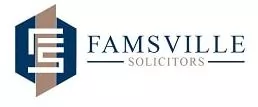Trademark registration in Nigeria is regulated by the Trademarks Act 1967 and Trademarks Regulations. The application is made to the Trademarks Registrar in the Trademarks, Patents and Designs registry under the Federal Ministry of Industry, Trade and Investment.
Trademarks can be registered by any natural or artificial person with interest in a mark. A duly registered trademark grants an exclusive right to use the trademark in relation to the goods and services it was registered. A trademark owner has a right to institute an action for infringement of the trademark.
PROCEDURE
Official Acknowledgement of Application
Upon verification of statutory fees, the registry opens an official file for the fresh application, and an acknowledgement form is then issued, which assigns a temporary number to the application. This acknowledgement form simply acknowledges that an application has been received at the registry on a particular date, which date remains the official date of that trademark. In addition, the document details the mark, the name of the applicant as well as the agent on record, if any.
Examination of Application
The application is examined by the Registrar on both relative and absolute grounds of objections. The registrar will inspect if the mark is not identical or closely similar to an existing trademark, distinctive and whether the mark is deceptive, scandalous or in any way prohibited by an existing law.
Where, however, the application does not meet the requirements, a Refusal Notice is issued. This process usually takes another 3-6 weeks, sometimes more. The Refusal Notice is usually not final and the applicant has an opportunity to respond to the citations raised and attempt to overcome the same through written submissions/agreements. Additional oral supporting arguments may be required.
Advertisement in the Trademarks Journal
Once a mark has been accepted, it is listed for advertisement in the Trademark Journal. This takes 1-2 years in practice.
Oppositions /3rd Party Actions
After the publication, an application for registration stands open for two months, for oppositions or 3rd Party Actions. The party objecting to the registration of a mark must file a Notice of Opposition within this two-month period, as the period is non-extensible. Filing a Notice of Opposition sets the opposition process in motion.
Payment of Sealing Fees to obtain Registration Certificates
Where no objections are filed against an application at the expiration of the 2-month Opposition period, the Final Registration/Sealing Fees then fall due for payment.
Other information
Registered trademarks (including applications) can be assigned or transferred in respect of all the goods and services in respect of which it is registered or in respect of some (but not all) of those goods and services. It may be assigned with or without goodwill. Other business assets need not be assigned to make the assignment of trademark a valid transaction. A duly stamped deed of assignment suffices for an assignment of the trademark. It must be recorded for the purpose of validity.
E-Registration
The increasing drive by the government towards e-governance has endeared the trademarks registry to create an online platform to lodge registration. The platform allows users to conduct availability search on existing trademarks. This reduces the likelihood of conflict with existing marks.
Duration of Protection
A trademark is registered for 7 years in the first instance and may be renewed at the option of the registered proprietor, for further periods of 14 years thereafter. There is no limit to the number of times a mark may be renewed.
Searches
Clients are advised to carry out an availability/conflict search prior to lodging a new application, in order to ascertain the availability of registration and the registrability of the proposed application.
Use Requirements
The Trademarks Act does not require that a mark is used prior to being registered. An application may thus be filed in respect of a mark presently being used or proposed to be used at a future date.
There is also no requirement to file a Declaration of use later or in order to obtain renewal of the mark when it falls due.
Non-Use
A Non-Use action may, however, be brought against a registered trademark that has remained registered for 5 years without being used, or without any bonafide intention on the part of the registered proprietor to use it.
Requirements for filing
- Details of the Applicant - Name, Nationality and Address.
- The trademark sought to be registered.
- The Specification of goods (and Class).
- 10 (ten) prints/representations of the proposed mark.
- A Power of Attorney/Authorization of Agent executed in our favour. This requires only a simple signature and need not be legalized or notarized.
Remedy
The Trademarks Act 1967 grants a civil right of action to the mark owner to sue for any instance of infringement. The Federal High Court is vested with the exclusive jurisdiction to adjudicate on trademark infringement-related issues.
The owner of a mark can seek the court for orders of injunction restraining infringements, accounts for profits and damages and cost.
An unregistered owner of a trademark can sue an infringer for the tort of passing off at the High Court of any state in Nigeria.
Defense
A defendant in a trademark infringement suit can use any of the defenses available under the law. The defenses are fair usage, proprietor's abandonment of the trademark, honest coexisting use, and nonrenewal.
Can foreign trademarks be afforded recognition in Nigeria?
The Paris convention allows registration of Trademarks based on foreign priority. Consequently, an overseas trademark can be registered in Nigeria within six (6) months of registration in the foreign country. The effective date of registration in Nigeria based on foreign priority claim will be the date of original registration in the foreign country.
Conclusion
Trademarks go beyond registration. There is a need for a mark owner to stay abreast ahead of the potential infringer. Mark owners should invest in intellectual property management and auditing. Furthermore, the e-filing is commendable; however, the government can take steps further to embrace blockchain technology to make trademarks registration and management seamless.
The content of this article is intended to provide a general guide to the subject matter. Specialist advice should be sought about your specific circumstances.


